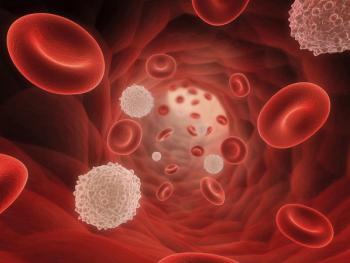
Adjuvant vs Salvage Radiotherapy in High-Risk Prostate Cancer
Adjuvant radiotherapy after prostatectomy resulted in lower rates of biochemical recurrence, distant metastases, and death compared with surveillance followed by early-salvage radiotherapy in patients with high-risk prostate cancer, according to a new study.
Adjuvant radiotherapy (ART) after prostatectomy resulted in lower rates of biochemical recurrence, distant metastases, and death compared with surveillance followed by early-salvage radiotherapy (ESRT) in patients with high-risk prostate cancer, according to a new study.
“Patients with adverse pathological features, such as positive surgical margins, extraprostatic extension, and seminal vesicle invasion, have a 40% to 70% risk of biochemical recurrence” after radical prostatectomy, wrote study authors led by William L. Hwang, MD, PhD, of Massachusetts General Hospital in Boston. Despite recommendations for the use of ART in these patients, its use is under 10% and declining, likely because of concerns regarding overtreatment. ESRT is often used instead-after monitoring for biochemical recurrence-but no data comparing the approaches were previously available.
The new study included 1,566 patients with high-risk prostate cancer who underwent prostatectomy and were then treated with either ART (371 patients) or ESRT (1,195 patients). The median age was 60 years, and patients were followed for a median of 58.4 months in the ART group and 55.9 months in the ESRT group (P = .08). The results were
The ESRT group had a lower pathological T stage, lower Gleason score, lower rate of positive margins, less use of intensity modulated RT, and greater use of postoperative androgen deprivation therapy compared to the ART group.
The researchers examined outcomes in a group of 366 propensity-matched pairs of patients. In this cohort, as expected, the ART group had a shorter median time from surgery to RT (4.5 months vs 14.1 months; P < .001). The freedom from biochemical failure rate was better with ART, with 61 events compared with 140 events with ESRT (P < .001). The same was true for freedom from distant metastases, with 14 and 28 events in the two groups, respectively (P = .03), and for overall survival, with 20 and 35 events, respectively (P = .01). There were six prostate cancer–specific deaths with ESRT and only one with ART, but the low number of events made statistical analysis of this outcome impossible.
The 12-year freedom from biochemical recurrence rate was 69% with ART and 43% with ESRT. For freedom from distant metastases, those rates were 95% and 85%, respectively, and for overall survival the rates were 91% and 79%, respectively. A multivariate model found that ART was significantly associated with lower biochemical failure compared with ESRT, with a subhazard ratio of 0.34 (95% CI, 0.24–0.48; P < .001). Pathological T stage, surgical Gleason score, nodal radiotherapy, and postoperative ADT were also significantly associated with biochemical failure.
“Our findings suggest that a greater proportion of [high-risk patients] may benefit from ART, especially those for whom the estimated risk of post-prostectomy recurrence is greater than 50%,” the authors wrote. “Pending prospective validation, contemporary practice patterns regarding postoperative RT should be revisited.”
Newsletter
Stay up to date on recent advances in the multidisciplinary approach to cancer.


















































































